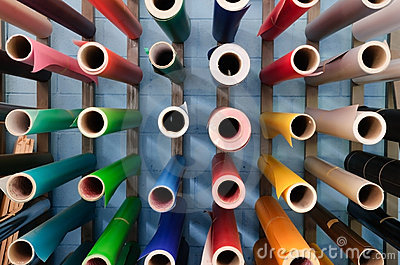The quality, thickness and finishes of the paper stock for your desired design project is a very important decision to make, because it effects your designs to a great extent. There are many types and styles of paper that are used for printing purposes such as various shades, textures, thicknesses, sizes and volumes. Today’s amazing printing technologies, whether offset or digital, have allowed for various types of paper that can be used to create different effects. Many paper suppliers or stockists will be more than happy to show you sample booklets of each category of paper they can provide.
The specific paper stock effects your designs, in a way that if you have detailed imagery in the layouts, the paper chosen should enhance the look of your picture and bring out the true colours. Coated and uncoated stocks of papers are used in commercial printing which are measured according to weight, known as gsm or grams per square meter. A good indication is that cheap photocopy paper is about 80 gsm and standard business cards range from 100 — 300 gsm.
Different stocks produce different colours — for example, when colours are printed on un-coated, matte and coated stocks of paper, these produce variations of colors even if the same ink is being used. This happens because of the different absorbent properties of the stock. Fluorescent lights emit high levels of green and yellow. Designers must keep in mind that whilst all of these colours look the same on the screen, they most definitely will vary when printed on different paper stocks. This is where the Pantone Matching System (pms colours) are a great reference for designers to specify and match colours within the design. So the correct stock selection is important and must be taken in to account when designing and creating your projects. You could even ask your local printer for a mock up or printed proof of your design, to avoid any complications or miscommunications and to be sure that you are happy with the result.
I hope that this opens up your mind to the endless possibilities available when being creative — not only is design important, but the overall presentation and paper quality can enhance the graphic design concepts as well.


